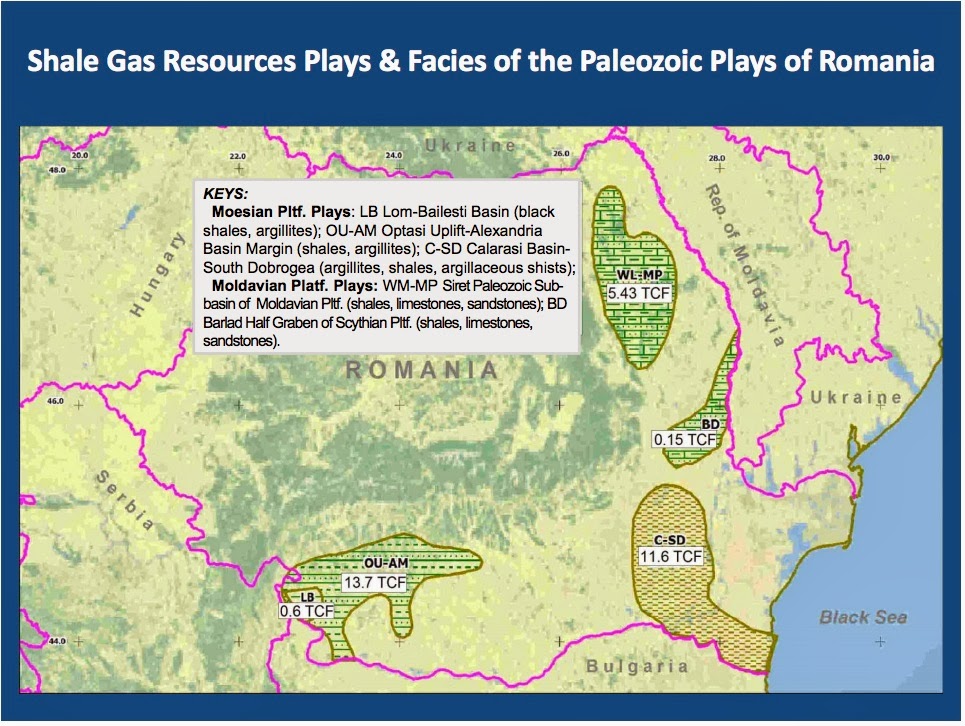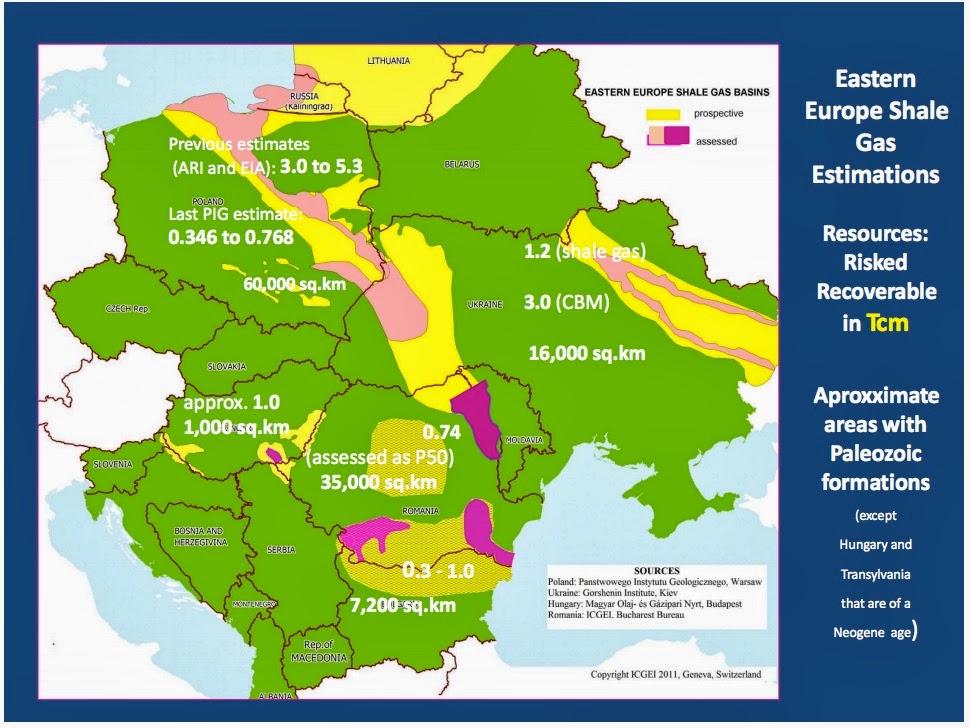There hasn’t been a lot of news about Fracking protests in Romania, but what we’re interested in anyway is the higher level issues. Is the development of shale gas using hydraulic fracturing a good idea environmentally, economically, etc, and is it contributing to the destabilization of democracy in countries like Romania. While looking this evening for some information, I stumbled across an excellent website developed by an independent journalist in Romania going over how Fracking came to Romania.
The site is at http://fracking.casajurnalistului.ro/![]() It’s, of course, written in Romanian, so I recommend doing what I do – use Google’s Chrome web browser, and you get automatic language translation. The result is pretty readable. Another interesting site was published by the Agenţia Naţională pentru Resurse Minerale (ANRM) a.k.a. National Agency for Mineral Resources, which is attempting to explain Fracking to the citizens of Romania. INFO GAZE DE SIST (information on shale gas)
It’s, of course, written in Romanian, so I recommend doing what I do – use Google’s Chrome web browser, and you get automatic language translation. The result is pretty readable. Another interesting site was published by the Agenţia Naţională pentru Resurse Minerale (ANRM) a.k.a. National Agency for Mineral Resources, which is attempting to explain Fracking to the citizens of Romania. INFO GAZE DE SIST (information on shale gas) ![]() presents a high level overview written for the general public, and presents a number of myths as if they’re facts concerning shale gas and hydraulic fracturing.
presents a high level overview written for the general public, and presents a number of myths as if they’re facts concerning shale gas and hydraulic fracturing.
I learned a very important thing – the U.S. State Department has a program originally called the Global Shell Gas Initiative and now called the Unconventional Gas Technical Engagement Program ![]() whose purpose is “to help countries seeking to utilize their unconventional natural gas resources to identify and develop them safely and economically.” What the program does is export American expertise in hydraulic fracturing (Fracking) so that American oil companies can Frack the World.
whose purpose is “to help countries seeking to utilize their unconventional natural gas resources to identify and develop them safely and economically.” What the program does is export American expertise in hydraulic fracturing (Fracking) so that American oil companies can Frack the World.
Countries are selected “based in part on the known presence of natural gas-bearing shale within their borders, market potential, business climates, geopolitical synergies, and host government interest.” The UGTEP initiates “government-to-government policy engagement” that takes a number of forms depending on local needs and capabilities. Generally it involves activities like “shale gas resource assessments; technical guidance to evaluate the production capability, economics and investment potential of shale gas resources; and workshops and seminars on technical, environmental, business and regulatory challenges related to shale gas development.”
This is the same US State Department that the Keystone XL protesters are haranguing to block approval of the pipeline. So, on the one hand the State Dept. would block Keystone XL because it’s an environmental nightmare, but on the other hand continue working with countries around the world to expand the use of Fracking? Seems to me that getting the State Dept. to block Keystone XL is a non-starter as long as the UGTEP is in operation.
The next thing I learned is the geology – the “Play” they’re focused on is the “Paleozoic” which refers essentially to the depth of the drilling. In this case, the fracking wells are drilled to depths of 3-4000 meters. Here’s a map of the relevant shale gas resources in Romania

There’s three large blocks, one in the northeast (where the Pungesti protesters are fighting), one in the south-center, another in the south-east (Constantia), and a small one in-between. The last one is the area in which there were suspicious earthquakes that seemed to be from Fracking operations, but governmental officials denied any Fracking was going on there.

This is a map of shale gas estimates for Eastern Europe. Poland and the Ukraine also have big resources, with Hungary having smaller ones.
These came from an excellent slide deck – Paleozoic Shale Gas Plays of the Eastern Europe: Romania case study![]() . It was presented at the Romania Oil & Gas conference, December 2012.
. It was presented at the Romania Oil & Gas conference, December 2012.
Something the fracking.casajurnalistului.ro website discusses is how Romania is caught between the U.S. and Russia. The US and Romania are on great terms with each other, but so too are Romania and Russia. The US and Russia both seem to be competing to gain dominance in Romania, or in the case of Russia that might be to regain dominance. Romania was in the Soviet sphere following WWII, but was also very friendly with the US during that period.
Across the border in the Ukraine, that country is undergoing an upheaval with revolutionaries in the street. The fight there is explicitly a power play between Russia and Europe (western powers) over dominance, with both Russian and Western powers having offered competing economic packages to the Ukrainian government. I’m wondering, without having checked into this thought, whether those packages had anything to do with Fracking and these shale gas plays shown on the map above.
The USAID has written an assessment of environmental and political ramifications of developing shale gas in the Ukraine![]() . Such a document is of the sort of action the UGTEP would undertake, right?
. Such a document is of the sort of action the UGTEP would undertake, right?
The last point I want to bring out of the fracking.casajurnalistului.ro website is whether Romania needs this. Romania has the 3rd largest conventional fossil fuels production in Europe. Their resources were so important that during WWII Germany and Russia were contesting Romania. Germany desperately needed oil resources, which is why they made such a deep invasion into Russia, to reach the oil fields near the Caspian Sea, but in the meantime Germany did gain control over Romania.
In any case – if Romania has such strong fossil fuel resources, why do they need to start fracking?
The answer may be that Romania seems to be destined to hit its peak of production in 15-20 years, and given the length of time required to develop new fossil fuel production they have to start soon on developing fracking. That is, if Fracking is the direction Romania should take. The country does have extensive wind power capabilities, for example.
A related issue is whether Romania stands to gain very much from selling off its resources like this. According to documents published on the fracking.casajurnalistului.ro website, Romania has extremely low royalty/tax/fee requirements on fossil fuel companies. Why? The fees were established during the communist era when the fossil fuel company was owned by the Romanian government. Now that capitalistic companies are looking to exploit Romania’s natural wealth, Romania’s policies mean that Romania won’t get much payout.
The fossil fuel companies are extremely sensitive to these fee’s. According to the website, over in Poland the fossil fuel companies threatened to pull out if the Polish government were to increase their fee structure.
That’s the leverage these fossil fuel companies have over these countries. Exploiting fossil fuel resources can bring a lot of wealth to these countries, but only under terms acceptable to the fossil fuel companies.
- Highway design could decrease death and injury risk, if “we” chose smarter designs - March 28, 2015
- GM really did trademark “range anxiety”, only later to abandon that mark - March 25, 2015
- US Government releases new regulations on hydraulic fracturing, that some call “toothless” - March 20, 2015
- Tesla Motors magic pill to solve range anxiety doesn’t quite instill range confidence - March 19, 2015
- Update on Galena IL oil train – 21 cars involved, which were the supposedly safer CP1232 design - March 7, 2015
- Another oil bomb train – why are they shipping crude oil by train? – Symptoms of fossil fuel addiction - March 6, 2015
- Chevron relinquishes fracking in Romania, as part of broader pull-out from Eastern European fracking operations - February 22, 2015
- Answer anti- electric car articles with truth and pride – truth outshines all distortions - February 19, 2015
- Apple taking big risk on developing a car? Please, Apple, don’t go there! - February 16, 2015
- Toyota, Nissan, Honda working on Japanese fuel cell infrastructure for Japanese government - February 12, 2015

















Pingback: State Department pushes Fracking and Fossil Fuels on the world, while Kerry calls for action on Climate Change – The Long Tail Pipe
Pingback: Ukraine’s revolution stems from dependency on Russian natural gas and plans to frack themselves free of Russia – The Long Tail Pipe